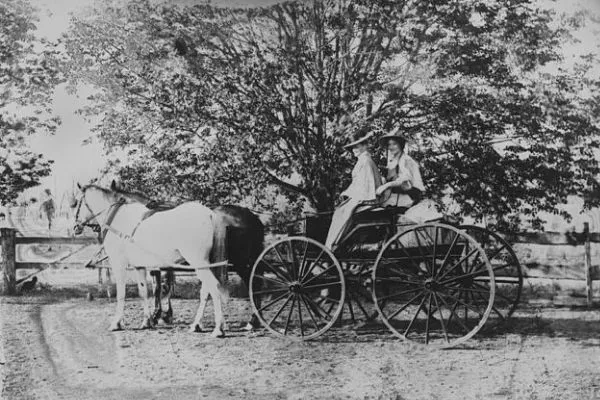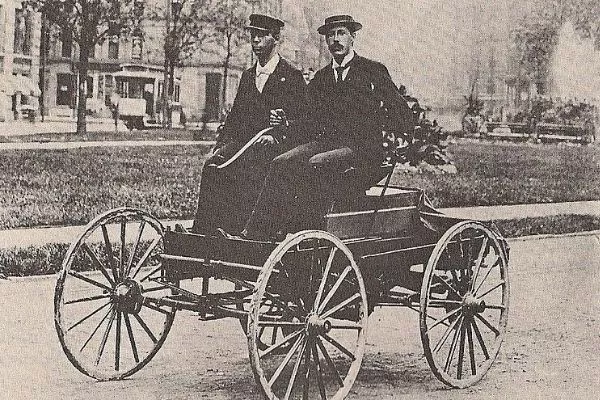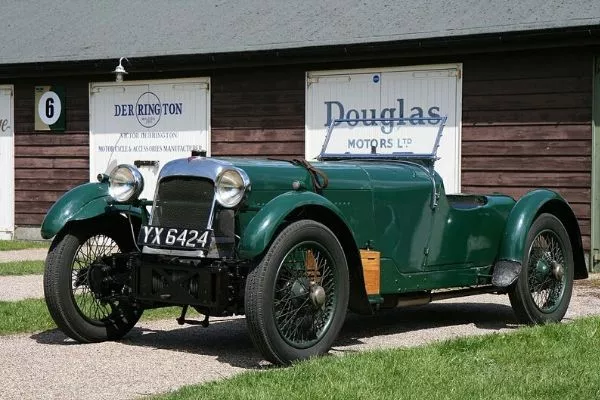Horse-drawn carriages immediately preceded the earliest automobiles, so it might seem to make more sense for the first cars to have front-wheel drive (FWD), right? Not exactly.

Early vehicles were pulled, not pushed, by horses
Automotive technology was in its infancy, and having the front axle handle both steering and propulsion was still an engineering challenge, especially when horseless carriages had to be steered by a tiller.
It was easier to route power to the rear wheels by means of a chain and eventually a driveshaft. There were some oddball configurations, such as De Dion-Bouton’s steam-powered buggy in the 1800s where the engine drove the front wheels and steering was courtesy of the rear wheels.

It was hard enough to steer the front wheels without placing the engine between them
Interestingly, it was motorsport that put front-drive cars, well, front and center. An American inventor named John Walter Christie worked on designing FWD cars, which he promoted by participating in races across the United States and even the French Grand Prix.
One of those who worked with him was Harry Miller, who eventually ventured into building his own race cars. The absence of a driveshaft made Miller’s cars sit low, making them more stable at speed. Plus, their long hoods were imitated on rear-wheel-drive luxury cars in the 1920s and 1930s.
>>> Related: Front Wheel, Rear Wheel or All-Wheel drive: Which is better?

Cars like the Alvis FWD helped promote the drivetrain's use in motorsports
FWD had its first successful consumer application in 1929 with the BSA Three Wheeler. Sporadic developments in FWD models appeared within the next two decades, led by carmakers from France, Germany, Italy, and England. In 1955, Suzuki unveiled its Suzulight Kei car as one of the first Japanese carmakers adopting FWD.
In 1959, the Austin Mini was introduced, in response to the 1956 Suez Crisis which tightened oil supplies for the first time. The Mini’s entry revived interest in FWD cars, with its compact proportions yet generous interior space for passengers and luggage, as well as clever engineering for the mechanical components.
The 1973 oil embargo brought fuel prices to stratospheric heights, and FWD models became necessary as people wanted cars that could make the most out of every drop of fuel.

The Austin Mini helped revive interest in FWD cars
>>> Related: 4 simple methods to tell if a car is a front-wheel drive or rear-wheel drive
Today, a vast majority of passenger cars (from sedans to crossovers) use a FWD configuration. The same reasons still apply: a more compact drivetrain allows for smaller and lighter models that boast generous interior space.
Concentrating the drivetrain’s weight in front also helps eliminate energy loss since the engine’s output doesn’t have to travel all the way to the rear wheels, while improving acceleration and traction on slippery surfaces.
Such cars don’t need a bigger engine (and that much fuel) to get going, which enables automakers to drive the sticker price down for more buyers.
Journey through motoring history with Philkotse.com.












